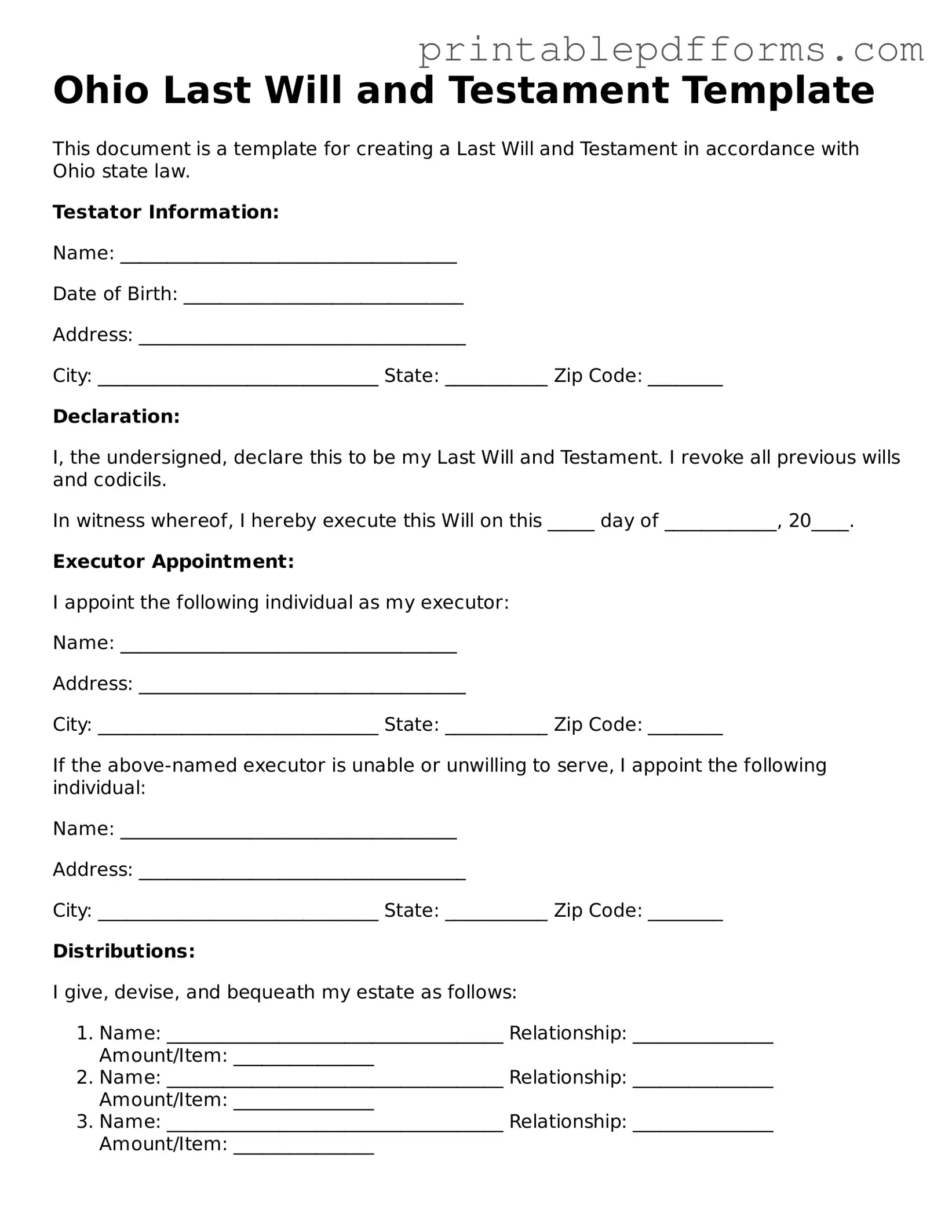Ohio Last Will and Testament Template
This document is a template for creating a Last Will and Testament in accordance with Ohio state law.
Testator Information:
Name: ____________________________________
Date of Birth: ______________________________
Address: ___________________________________
City: ______________________________ State: ___________ Zip Code: ________
Declaration:
I, the undersigned, declare this to be my Last Will and Testament. I revoke all previous wills and codicils.
In witness whereof, I hereby execute this Will on this _____ day of ____________, 20____.
Executor Appointment:
I appoint the following individual as my executor:
Name: ____________________________________
Address: ___________________________________
City: ______________________________ State: ___________ Zip Code: ________
If the above-named executor is unable or unwilling to serve, I appoint the following individual:
Name: ____________________________________
Address: ___________________________________
City: ______________________________ State: ___________ Zip Code: ________
Distributions:
I give, devise, and bequeath my estate as follows:
- Name: ____________________________________ Relationship: _______________ Amount/Item: _______________
- Name: ____________________________________ Relationship: _______________ Amount/Item: _______________
- Name: ____________________________________ Relationship: _______________ Amount/Item: _______________
Guardianship:
If my children are under the age of eighteen (18) at the time of my death, I appoint the following individual as guardian:
Name: ____________________________________
Address: ___________________________________
City: ______________________________ State: ___________ Zip Code: ________
Witnesses:
This Will must be signed by two witnesses who are present at the same time and who also sign their names below:
Witness 1: _______________________________ Signature: __________________________
Witness 2: _______________________________ Signature: __________________________
Testator's Signature:
____________________________________ (Signature of Testator)
This instrument was signed by the above-named Testator in our presence and we, as witnesses, signed this Will in their presence.
